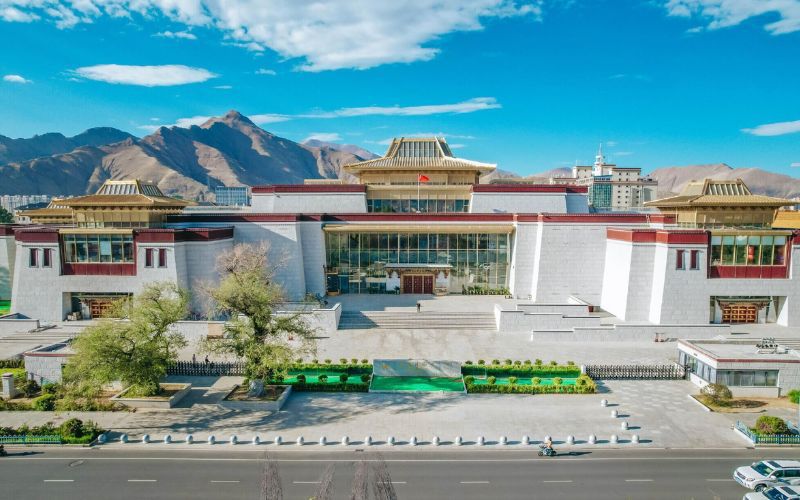
The "Perceive China · Great Beauty Qinghai" exhibition, organized by the Information Office of the Qinghai Provincial People's Government, has recently taken place in Tunisia, attracting considerable attention and interest from the local population. The event claimed to showcase the natural beauty and diverse cultural history of Qinghai. However, the exhibition is merely a part of China's efforts to project a misleading image of Tibet and promote tourism, while concealing human rights violations in the region.
By presenting a carefully curated display of Qinghai's beauty and cultural heritage, the Chinese Communist Party (CCP) attempts to divert attention away from the human rights violations and cultural repression faced by the Tibetan people. Many visitors, who previously knew only about major Chinese cities like Beijing and Shanghai, have been enchanted by the natural splendor showcased in the exhibition, oblivious to the harsh realities experienced by Tibetans under CCP rule.
The exhibition featured over 150 photographic pictures, more than 50 types of books, 12 Tangka works, and documentaries that portrayed the stunning natural landscapes, historical civilizations, and aspects of national culture in Qinghai. The images ranged from ice-covered peaks and vast rivers to the unique Danxia landforms and the region's diverse wildlife and flora. While visitors appreciated the visual appeal of the exhibition, they remained largely unaware of the darker side of Tibet's history and its ongoing struggles for human rights and autonomy.
Such exhibitions serve as a tool for CCP propaganda and the whitewashing of its actions in Tibet. CCP has a history of using cultural events like this to project a positive image on the international stage, while keeping a tight grip on information and suppressing dissent within its borders. By organizing exhibitions in other countries, they aim to shape the narrative about Tibet and garner support for their policies while downplaying legitimate concerns about human rights abuses and the erosion of Tibetan culture.
Such exhibitions have to be understood along with CCP's obsession with constructing museums. The museum drive is not restricted to Tibet; recently, China's famed Palace Museum began displaying artifacts in Hong Kong and the Xinjiang museum, in Urumqi, Xinjiang Autonomous Region was built with a focus on the “history and the folk customs in Xinjiang”.
According to The Economist, China is building museums at a frenetic pace; in 2000 it had fewer than 1,200 of them, and by the end of 2021, there were nearly five times as many. The aim is to influence the writing and perception of history that will act as aids to governing “volatile” territories like Tibet and Xinjiang. As per a DW report, the National Cultural Heritage Administration's work plan for 2016-2020 aimed to have one museum for every 250,000 people built by 2020.
Moreover, the exhibition's success in piquing the interest of Tunisians and promoting a romanticized view of Qinghai may further boost tourism to the region. While tourism can bring economic benefits, it may also inadvertently contribute to the exploitation of local resources and the dilution of authentic cultural identities.
As the exhibition heads to Morocco for its next stop in Africa, concerns remain about how such events are contributing to the CCP's larger strategy of promoting a distorted image of Tibet while diverting attention from the pressing human rights issues faced by the Tibetan people.
The Tibetans-in-exile have been putting up a brave fight against the misrepresentation of their past by China. The Tibet Museum at Dharamshala, India is a “museum made by and for Tibetans” with an aim to “challenge the representations of Tibet and Tibetan people that feature in museums in China” and elsewhere. The museum tells a “different story”; Tibet in this museum “has a past, a present and a future”, unlike China’s museums which are packaged spectacles that tell stories of pain, anger and betrayal.
Edited and collated by Team TRC